Last updated on February 8, 2024
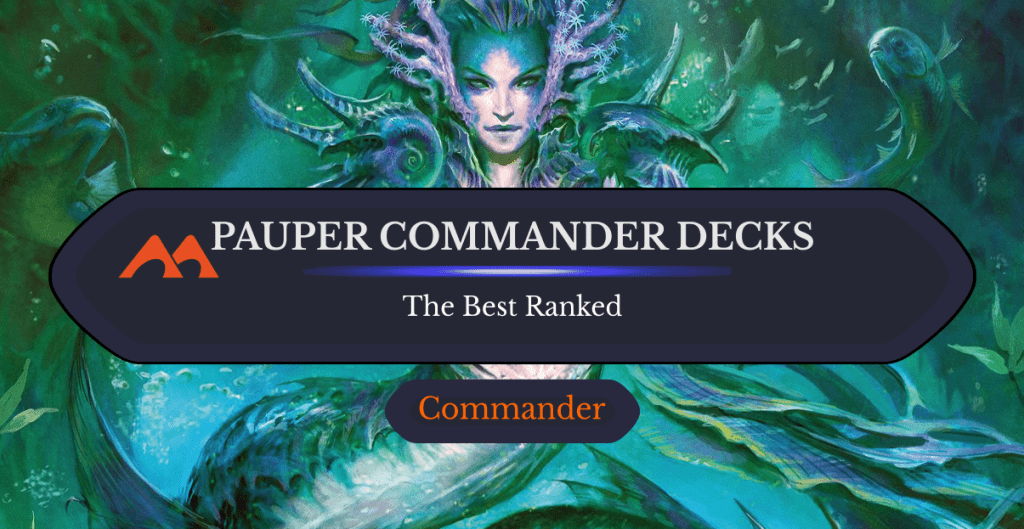
Tatyova, Benthic Druid | Illustration by Mathias Kollros
Building Commander decks is an expensive hobby. An average EDH deck can run you anywhere from $40 to thousands after years of upgrades, and chances are you’ll be hankering to build another before the first is even “complete.” If only there were a cheaper 100-card singleton format to play, oh woe is me and woe is you!
But what if I told you that you didn’t have to spend so much for every Commander deck? That’s right, Pauper (the superior 60-card format) has spread its budget-friendly deck building to Commander in the form of Pauper Commander, the commons-only (except for your Commander) casual format designed to capture the essence of multiplayer Commander games on a budget! That’s right, at the cheap cost of one uncommon and 99 chaff commons, you can build a competitive Pauper Commander deck for under $40!
Where to start? With over 4000 uncommon creatures and an insurmountable number at common, how are you supposed to pick a commander? Worry not, I’ve ranked some of the most common powerhouse uncommons here just for you! Let’s dive right in and see what makes these paupers so… uncommon! (sorry).
What Are Pauper Commander Decks in MTG?
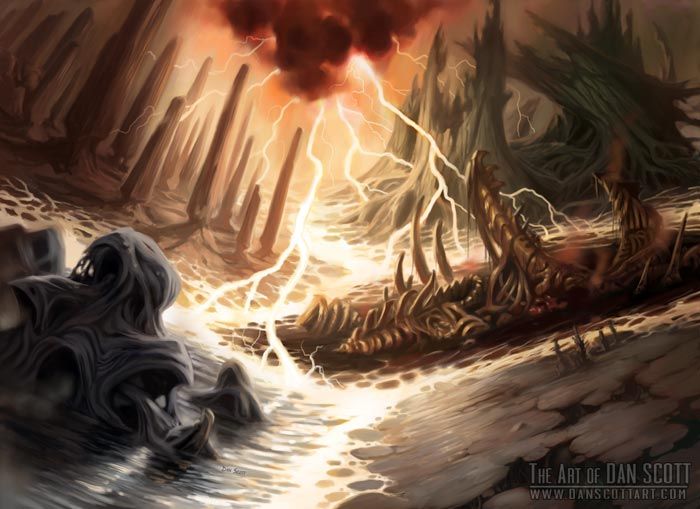
Terramorphic Expanse | Illustration by Dan Scott
Pauper Commander is a 100-card singleton format, meaning you can only include one of each card that’s not a basic land. As a Commander format, you need to choose one creature to be your commander, which then defines your deck’s color identity. Like EDH, you can only include cards that match your commander’s color identity.
That’s where the similarities end, though. Your commander can be any uncommon creature and doesn’t have to be legendary like a typical EDH deck. In addition, every other card in your deck must be a common. As long as a card has at least one printing at common or uncommon, it counts as either.
These Pauper Commander decks are some examples of the most popular, but this is by no means a definitive list. The pauper commanders listed here are either staple decks in the format or are a good introduction to the format’s slower play speed and smaller advantages.
#15. Scornful Aether-Lich
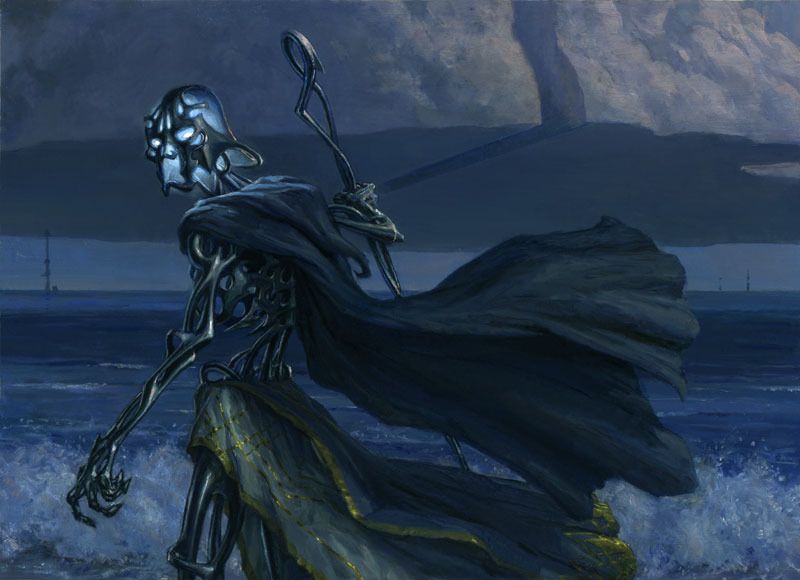
Scornful Aether-Lich | Illustration by Steven Belledin
Commander (1)
Creature (27)
Architects of Will
Arsenal Thresher
Bleak Coven Vampires
Cloudheath Drake
Darklit Gargoyle
Disciple of the Vault
Dreamscape Artist
Esper Sojourners
Esper Stormblade
Etherium Sculptor
Ethersworn Shieldmage
Faerie Mechanist
Gearseeker Serpent
Glassdust Hulk
Glaze Fiend
Myr Enforcer
Nim Shrieker
Parasitic Strix
Salvage Slasher
Sanctum Gargoyle
Sojourner's Companion
Tidehollow Strix
Trinket Mage
Ulamog's Crusher
Vectis Agents
Vedalken Engineer
Windwright Mage
Instant (11)
Brainstorm
Capsize
Counterspell
Frantic Salvage
Geth's Verdict
Grasp of Darkness
Lens Flare
Murder
Stoic Rebuttal
Tidy Conclusion
Unmake
Sorcery (10)
Consult the Necrosages
Fortuitous Find
Mine Excavation
Ponder
Preordain
Read the Bones
Remember the Fallen
Ritual of Restoration
Tezzeret's Ambition
Thoughtcast
Enchantment (4)
Arrest
Encrust
Faith's Fetters
Oblivion Ring
Artifact (14)
Azorius Signet
Commander's Sphere
Cranial Plating
Darksteel Pendant
Dimir Signet
Fieldmist Borderpost
Golem Foundry
Mistvein Borderpost
Mycosynth Wellspring
Neurok Stealthsuit
Obelisk of Esper
Orzhov Signet
Tooth of Chiss-Goria
Whispersilk Cloak
Land (33)
Ancient Den
Ash Barrens
Azorius Chancery
Barren Moor
Darksteel Citadel
Desert of the Glorified
Desert of the Mindful
Desert of the True
Dimir Aqueduct
Drifting Meadow
Esper Panorama
Evolving Wilds
Island x2
Lonely Sandbar
Orzhov Basilica
Plains
Polluted Mire
Radiant Fountain
Remote Isle
Seat of the Synod
Secluded Steppe
Snow-Covered Island
Snow-Covered Plains
Snow-Covered Swamp
Swamp x3
Terramorphic Expanse
Urza's Mine
Urza's Power Plant
Urza's Tower
Vault of Whispers
Scornful Aether-Lich used to be one of the only 3-color options for a PDH deck. Many more have since been printed, but this Esper-aligned zombie will always have a place in my heart as the original PDH Voltron commander.
Its activated ability grants two semi-relevant keywords; the first being a conditional evasion effect and the second just being vigilance. Neither of these are amazing on their own, especially considering you can’t always predict what colors your opponents are playing, but access to three colors gives Scornful Aether-Lich a larger card pool to draw from. Besides access to the best artifact-themed Voltron card out there (Cranial Plating), you also have the typical Esper-themed artifact combo cards like Disciple of the Vault, or great value combat-steppers like Glassdust Hulk and Glaze Fiend. Run it alongside lots of affinity cards and 0-cost artifacts like Tormod's Crypt and go to town!
#14. Kutzil, Malamet Exemplar
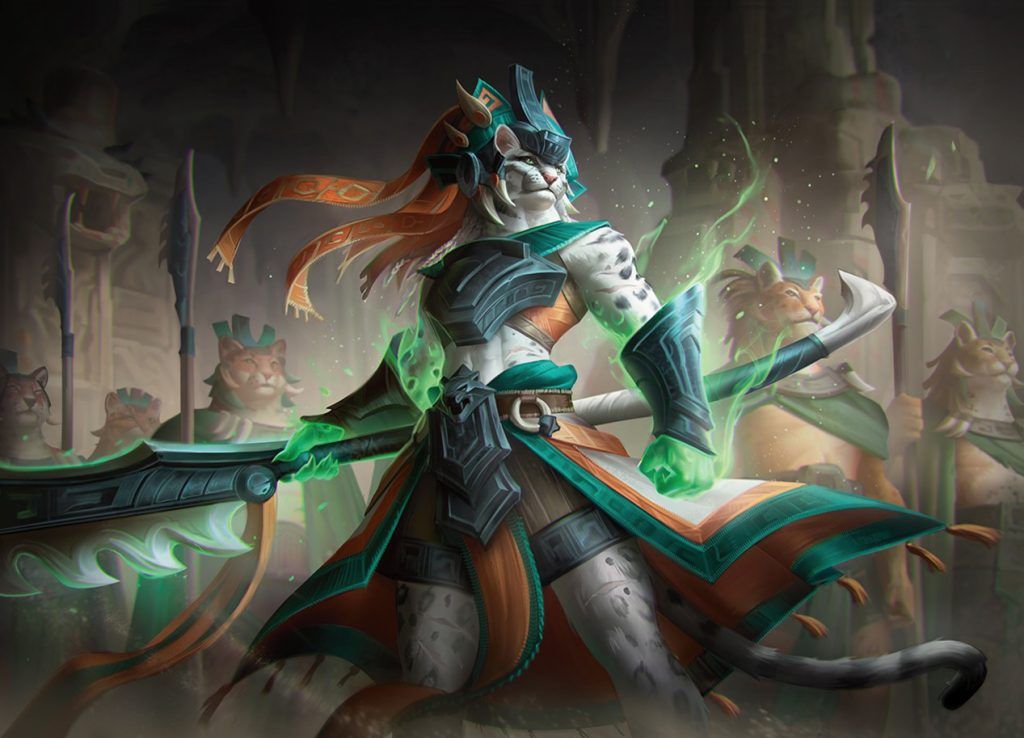
Kutzil, Malamet Exemplar | Illustration by Marie Magny
Commander (1)
Creature (23)
Almighty Brushwagg
Amrou Seekers
Angel of the Dawn
Attended Knight
Avacyn's Pilgrim
Beloved Princess
Eagles of the North
Elgaud Inquisitor
Elvish Visionary
Ghost Tactician
Gorilla Berserkers
Heliod's Pilgrim
Inspiring Overseer
Ivy Lane Denizen
Leonin Armorguard
Llanowar Elves
Monk Idealist
Monk Realist
Priest of Ancient Lore
Soltari Trooper
Soltari Visionary
Spire Tracer
Warded Battlements
Instant (18)
Aggressive Urge
Break of Day
Charge
Dawn Charm
Fortify
Fully Grown
Giant Growth
Glorious Charge
Magnify
Ramosian Rally
Ranger's Guile
Sigil Blessing
Symbiosis
Titanic Growth
Vines of Vastwood
Warhorn Blast
Wrap in Vigor
You Hear Something on Watch
Sorcery (10)
Abundant Harvest
Captain's Call
Cultivate
Gather the Townsfolk
Lead the Stampede
Marshaling Cry
Queen's Commission
Rampant Growth
Saproling Migration
You Meet in a Tavern
Enchantment (5)
Armadillo Cloak
Cartouche of Solidarity
Fanatical Devotion
Master Chef
Rancor
Artifact (7)
Aeronaut's Wings
Arcane Signet
Commander's Sphere
Fellwar Stone
Mind Stone
Selesnya Signet
Whispersilk Cloak
Land (36)
Evolving Wilds
Forest x16
Plains x16
Selesnya Guildgate
Selesnya Sanctuary
Terramorphic Expanse
I’m really excited about the possibilities Kutzil, Malamet Exemplar unlocks. Kutzil keeps your creatures safe from counterspells and removal during your turn, letting you buff them up with classic pumpers like Rancor. On its face, Kutzil is an easy-to-build-around uncommon that loves anthem effects and repeatable buffs. Use combat tricks like the humble Giant Growth to own the combat step without fear of counter-play.
Kutzil, Malamet Exemplar’s “out” is good ol’ combat damage. Use the politics at the table to swing at unblocked players and keep your hand full before dropping Fortify or Marshaling Cry to attack for big damage.
#13. Guttersnipe
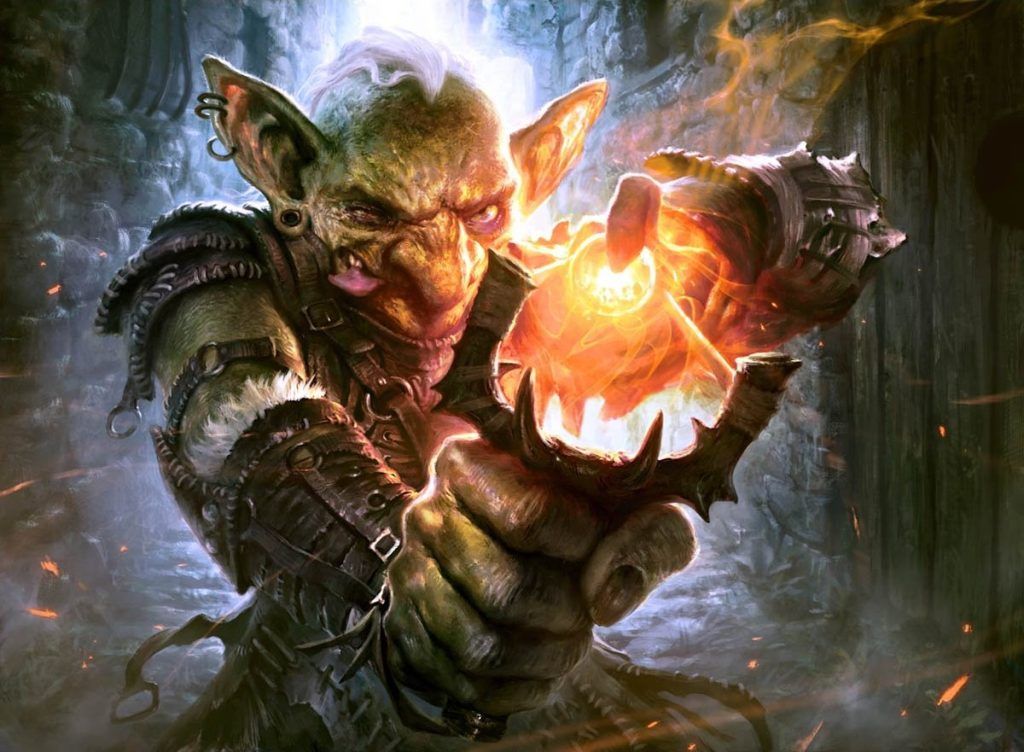
Guttersnipe | Illustration by Mathias Kollros
Commander (1)
Creature (12)
Blisterspit Gremlin
Brimstone Trebuchet
Cinder Pyromancer
Crashing Drawbridge
Crimson Fleet Commodore
Crown-Hunter Hireling
Firebrand Archer
Iron Myr
Kessig Flamebreather
Spear Spewer
Staunch Throneguard
Thermo-Alchemist
Instant (27)
Abrade
Blazing Salvo
Crimson Wisps
Dangerous Wager
Desperate Ritual
Electrickery
Expedite
Fire Prophecy
Fists of Flame
Frost Bite
Gut Shot
Incinerate
Inflame
Jaya's Greeting
Lava Dart
Lightning Bolt
Needle Drop
Pyretic Ritual
Pyroblast
Red Elemental Blast
Searing Spear
Shock
Skred
Smash to Smithereens
Spark Spray
Thrill of Possibility
Zap
Sorcery (21)
Blazing Volley
Boiling Earth
Cathartic Reunion
Chain Lightning
Crash Through
End the Festivities
Faithless Looting
Flame Jet
Flame Rift
Galvanic Relay
Grapeshot
Lava Spike
Mana Geyser
Reckless Impulse
Renegade Tactics
Rite of Flame
Satyr's Cunning
Skewer the Critics
Tormenting Voice
Warlord's Fury
Wild Guess
Artifact (7)
Arcane Signet
Bonder's Ornament
Commander's Sphere
Fire Diamond
Mind Stone
Thought Vessel
Whispersilk Cloak
Land (32)
Ash Barrens
Desert
Evolving Wilds
Forgotten Cave
Grixis Panorama
Jund Panorama
Naya Panorama
Radiant Fountain
Snow-Covered Mountain x22
Sunscorched Desert
Terramorphic Expanse
Guttersnipe has been printed at both common and uncommon, and it’s been one of the staple commanders of the PDH format since its release in Return to Ravnica. Guttersnipe makes it into the 99 of any burn-themed PDH deck, but its usefulness from the command zone can’t be overstated. Instant access to a Shock that hits every opponent for every instant or sorcery you cast is, honestly, nuts in this environment. Load up on cheap 1- and 2-cost spells to burn your opponents away from turn 3 onwards.
#12. Third Path Iconoclast

Third Path Iconoclast | Illustration by Manuel Castañón
Commander (1)
Creature (14)
Erebor Flamesmith
Filigree Attendant
Firebrand Archer
Guttersnipe
Ingenious Artillerist
Kessig Flamebreather
Murmuring Mystic
Oliphaunt
Penregon Strongbull
Reckless Fireweaver
Tandem Lookout
Thermo-Alchemist
Unruly Catapult
Witty Roastmaster
Instant (26)
Arcane Denial
Boomerang
Consider
Counterspell
Deprive
Dispel
Disruption Protocol
Echoing Truth
Galvanic Blast
Heartfire
Ice Out
Improvised Club
Keep Watch
Lightning Bolt
Make Disappear
Massive Raid
Meeting of Minds
Metallic Rebuke
Muddle the Mixture
Negate
Opt
Outnumber
Pack Attack
Resculpt
Skred
Stoic Rebuttal
Sorcery (13)
Distant Melody
Lórien Revealed
Merchant Scroll
Of One Mind
Ponder
Portent
Preordain
Reverse Engineer
Serum Visions
Shared Discovery
Sleight of Hand
Thoughtcast
Treasure Cruise
Enchantment (2)
Impact Tremors
Makeshift Munitions
Artifact (13)
Aether Spellbomb
Arcane Signet
Ashnod's Altar
Candy Trail
Fellwar Stone
Flywheel Racer
Izzet Signet
Lembas
Lotus Petal
Springleaf Drum
Star Compass
Sylvok Lifestaff
Witching Well
Land (31)
Ash Barrens
Command Tower
Darksteel Citadel
Great Furnace
Hidden Cataract
Hidden Volcano
Izzet Boilerworks
Molten Tributary
Mystic Sanctuary
Opal Palace
Path of Ancestry
Seat of the Synod
Silverbluff Bridge
Snow-Covered Island x12
Snow-Covered Mountain x5
Volatile Fjord
Third Path Iconoclast is an Izzet-colored uncommon with an ability that cares about casting noncreature spells. Creating a 1/1 artifact creature alongside any cheap cantrip or burn spell quickly adds up, especially once you land an Impact Tremors. Even outside of a straight-up spellslinger build, TPI makes for a great “affinity for artifacts” commander and can win games through playing cards like Steelfin Whale and Myr Enforcer. The absolute best for Third Path Iconoclast marries these two strategies into an effective combo where you can cast 0-drop artifacts like Tormod's Crypt over and over again with a Retraction Helix in play, capitalizing on the effects from Kessig Flamebreather and the like.
#11. Balmor, Battlemage Captain
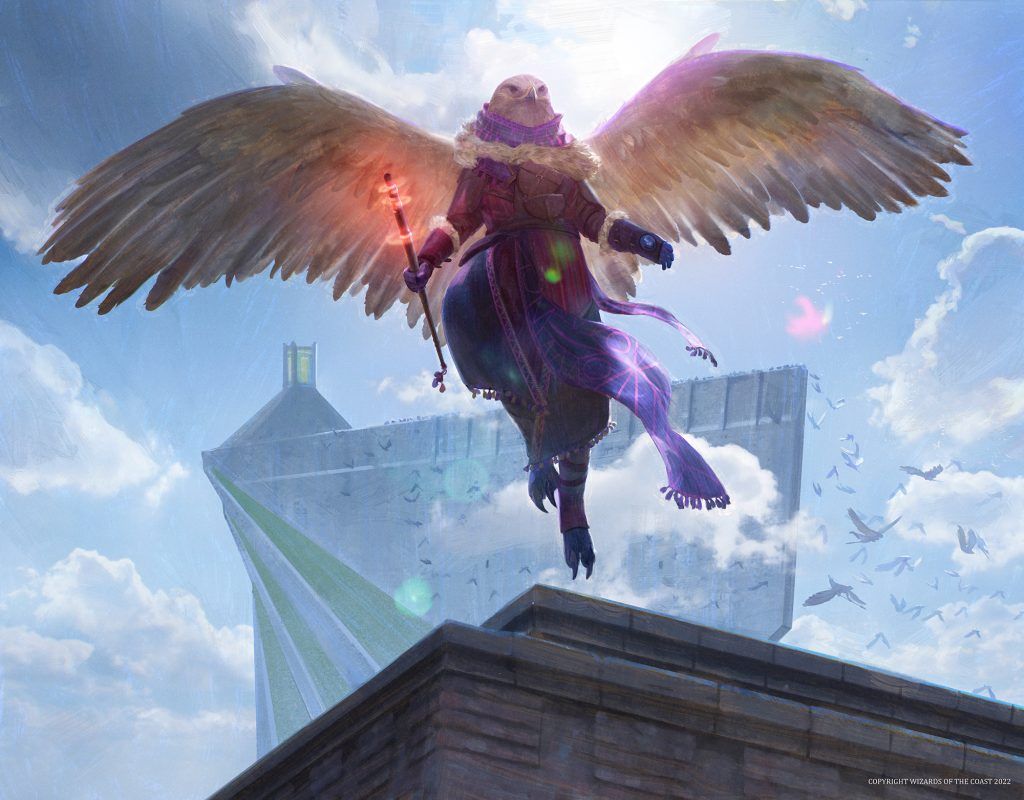
Balmor, Battlemage Captain | Illustration by Bram Sels
Commander (1)
Creature (22)
Archaeomancer
Ardent Elementalist
Beetleback Chief
Bloodwater Entity
Delver of Secrets
Elusive Spellfist
Erebor Flamesmith
Firebrand Archer
Goblin Electromancer
Goblin Instigator
Guttersnipe
Kessig Flamebreather
Kiln Fiend
Monastery Swiftspear
Mulldrifter
Peregrine Drake
Pyroceratops
Sanguinary Mage
Spellgorger Weird
Sword Coast Serpent
Thermo-Alchemist
Tolarian Terror
Instant (22)
Abrade
Battle Hymn
Behold the Multiverse
Big Score
Brainstorm
Chilling Trap
Confound
Consider
Counterspell
Deliberate
Deprive
Expedite
Frantic Search
Ghostly Flicker
Lightning Bolt
Negate
Opt
Perilous Research
Radical Idea
Snap
Thrill of Possibility
Turn Aside
Sorcery (16)
Birthday Escape
Cathartic Reunion
Deep Analysis
Dragon Fodder
Dwarven Reinforcements
Faithless Looting
Gitaxian Probe
Krenko's Command
Of One Mind
Preordain
Rally at the Hornburg
Reckless Impulse
Serum Visions
Swarming of Moria
Treasure Cruise
Winged Words
Artifact (6)
Aether Spellbomb
Arcane Signet
Fellwar Stone
Honored Heirloom
Mind Stone
Relic of Progenitus
Land (33)
Ash Barrens
Cliffgate
Command Tower
Evolving Wilds
Forgotten Cave
Highland Lake
Island x10
Izzet Boilerworks
Lonely Sandbar
Mountain x7
Mystic Sanctuary
Prismari Campus
Sea Gate
Silverbluff Bridge
Swiftwater Cliffs
Terramorphic Expanse
Thriving Bluff
Thriving Isle
Any semi-experienced Pauper player knows how much of a pain Monastery Swiftspear was to deal with, and how out of control it can get if left unanswered. Now take that obnoxious prowess effect and slap it on your entire board. Balmor, Battlemage Captain does basically that, with the bonus of granting trample as well. Balmor is begging you to run the storm cards at common, so I always make room for Grapeshot, Galvanic Relay, and even Ground Rift in my personal lists. The effect is instantaneous and brutal. Wrap Balmor, Battlemage Captain in any typical Izzet spellslinger package by including classics Kiln Fiend, Nivix Cyclops, and Goblin Electromancer and watch the sparks fly. Access to blue means you can always run the Archaeomancer + Peregrine Drake + Ghostly Flicker combo to get infinite mana, which you can then immediately dump into dropping every spell you can get your hands on.
#10. Khenra Charioteer
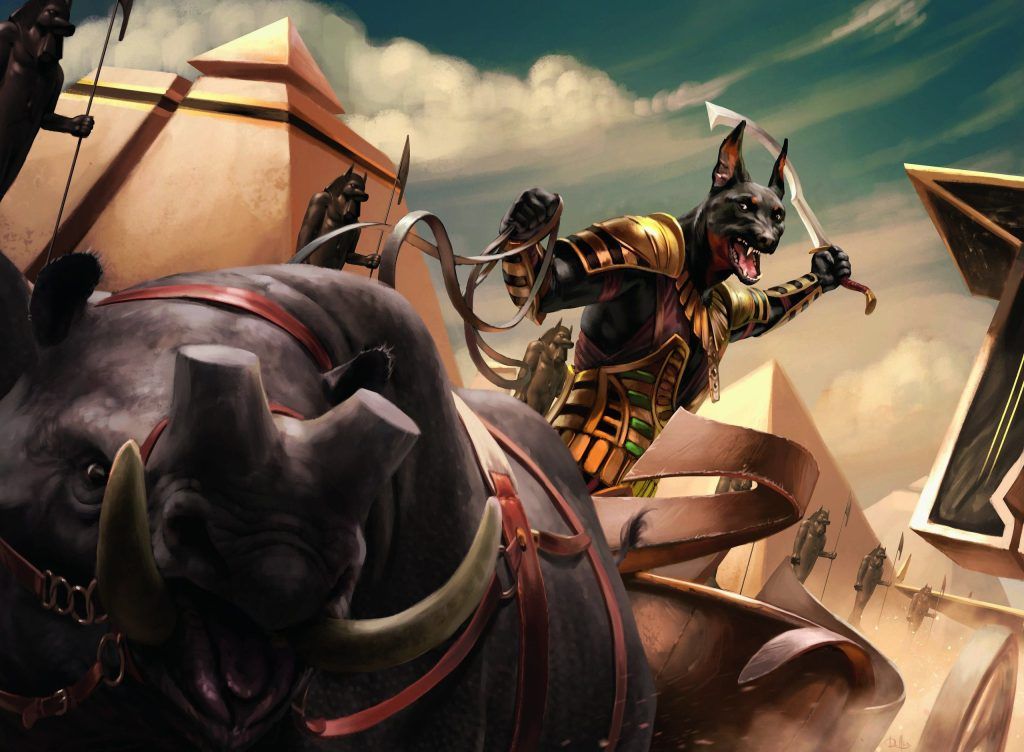
Khenra Charioteer | Illustration by Chris Rallis
Commander (1)
Creature (33)
Annoyed Altisaur
Bold Impaler
Deadly Recluse
Disciple of the Old Ways
Dread Linnorm
Ember-Eye Wolf
Entourage of Trest
Erdwal Ripper
Experiment One
Fang Dragon
Fiery Hellhound
Fyndhorn Elves
Gnarlback Rhino
Goblin Anarchomancer
Ivy Elemental
Keldon Raider
Kird Ape
Nearheath Stalker
Phantom Tiger
Pheres-Band Thunderhoof
Pilgrim's Eye
Pyre Hound
Scion of the Wild
Scrounging Bandar
Servant of the Scale
Siege Wurm
Sun-Collared Raptor
Tenement Crasher
Toxic Iguanar
Tuinvale Treefolk
Ulamog's Crusher
Verdant Automaton
Yavimaya Elder
Instant (11)
Ancient Grudge
Banners Raised
Battle Hymn
Expedite
Fire Prophecy
Fling
Harrow
Hunger of the Howlpack
Lightning Bolt
Snakeskin Veil
Uncanny Speed
Sorcery (11)
Abundant Harvest
Adventurous Impulse
Broken Bond
Commune with Nature
Cultivate
Explore
Kodama's Reach
Rampant Growth
Scale the Heights
Thrive
You Meet in a Tavern
Enchantment (7)
Dragon Mantle
Lignify
Madcap Skills
Omen of the Hunt
Rancor
Savage Silhouette
Snake Umbra
Artifact (2)
Decanter of Endless Water
Ecologist's Terrarium
Land (15)
Evolving Wilds
Forest x6
Gruul Guildgate
Manor Gate
Mountain x3
Riveteers Overlook
Thriving Bluff
Thriving Grove
Gruul cards do one thing really well, and that’s combat. Khenra Charioteer really captures that Gruul mentality in a Gruulishly simple way. Giving everything you own trample suddenly turns a deck of mid-level attackers into consistent damage each turn. Some of the best includes for a Charioteer deck are any creature with deathtouch and more than a point of power and toughness – suddenly that’s a guaranteed dead blocker and damage, however small, squeaking by.
There’s nothing too special here, just a simple aggro deck that looks to outpace its opponents by dropping consistent threats each turn.
#9. Izzet Guildmage
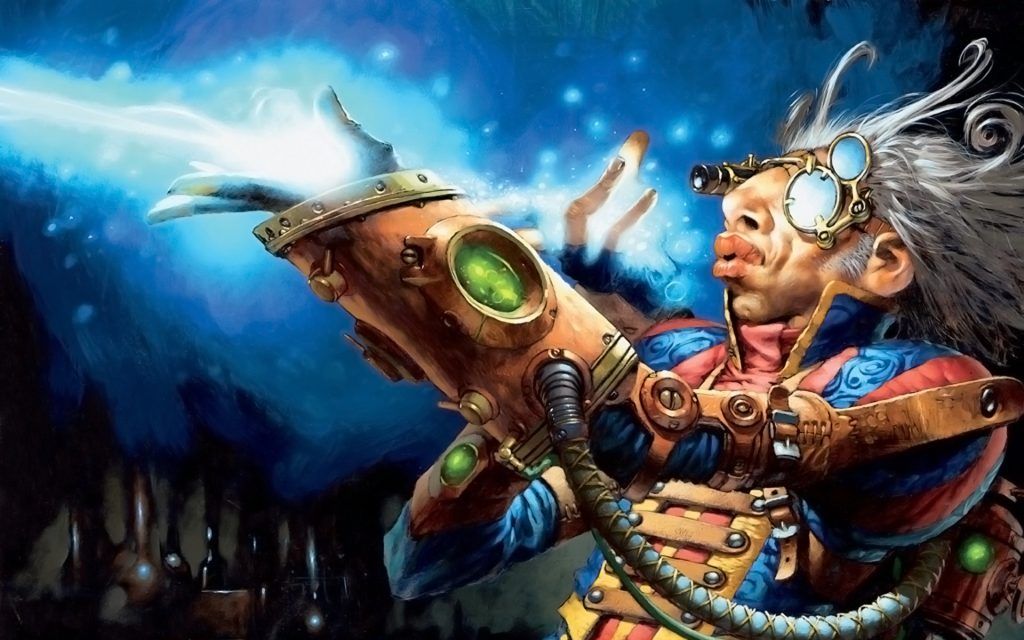
Izzet Guildmage | Illustration by Jim Murray
Commander (1)
Creature (7)
Oliphaunt
Automated Artificer
Fallaji Archaeologist
Ornithopter of Paradise
Academy Wall
Trinket Mage
Murmuring Mystic
Instant (31)
Brainstorm
Consider
Dispel
Electrickery
Fiery Impulse
Frost Bite
Galvanic Blast
Gigadrowse
High Tide
Intervene
Lightning Bolt
Opt
Skred
Arcane Denial
Blink of an Eye
Counterspell
Deprive
Dramatic Reversal
Fire / Ice
Fire Prophecy
Impulse
Into the Roil
Memory Lapse
Moment of Truth
Muddle the Mixture
Negate
Radical Idea
Think Twice
Thrill of Possibility
Volcanic Spite
Dizzy Spell
Sorcery (9)
Gitaxian Probe
Hard Evidence
Lórien Revealed
Ponder
Preordain
Treasure Cruise
Cleansing Wildfire
Hidden Strings
Merchant Scroll
Enchantment (1)
Artifact (18)
Everflowing Chalice
Arcum's Astrolabe
Moonsnare Prototype
Relic of Progenitus
Springleaf Drum
Arcane Signet
Fellwar Stone
Izzet Signet
Neurok Stealthsuit
Sky Diamond
Star Compass
Bonder's Ornament
Honored Heirloom
Lantern of Revealing
Network Terminal
Firemind Vessel
Sisay's Ring
Ur-Golem's Eye
Land (33)
Ash Barrens
Command Tower
Evolving Wilds
Great Furnace
Izzet Boilerworks
Maestros Theater
Molten Tributary
Mystic Sanctuary
Prismari Campus
Silverbluff Bridge
Snow-Covered Island x17
Snow-Covered Mountain x4
Terramorphic Expanse
Volatile Fjord
The cycles of Guildmages from the various Ravnica sets have always made for good uncommon commanders. Izzet Guildmage is the pinnacle of spellslinger decks and has everything you’d ever need built right in. Never mind that 2-mana cost restriction – there are plenty of cheap red and blue spells that we’d love to copy as much as possible.
Izzet Guildmage is one of the better payoffs for infinite mana in PDH. Its ability scales well into the late game even without an unlimited supply of mana, and it’ll usually end games by copying a Lightning Bolt a million times to burn the table to ashes.
This Izzet Guildmage deck makes infinite mana in two classic ways; the first being Dramatic Reversal and enough mana rocks to make 4 mana, or the use of Hidden Strings / Izzet Boilerworks / any mana rock that makes 2 or more mana.
Don’t forget your Dizzy Spell, either. Transmute commons are some of the best (and only) tutors in PDH, and digging up that Lightning Bolt once you’re ready is essential to ending the game.
#8. Khenra Spellspear

Khenra Spellspear | Illustration by Artur Nakhodkin
Commander (1)
Creature (5)
Firebrand Archer
Jeskai Elder
Kessig Flamebreather
Thermo-Alchemist
Tolarian Terror
Instant (34)
Antagonize
Arcane Denial
Behold the Multiverse
Blazing Crescendo
Brainstorm
Brute Force
Consider
Counterspell
Crimson Wisps
Dispel
Disrupt
Dive Down
Echoing Truth
Expedite
Fiery Impulse
Fists of the Anvil
Gush
Inordinate Rage
Intervene
Izzet Charm
Lightning Bolt
Mana Leak
Negate
Psychotic Fury
Raking Claws
Sapphire Charm
Shell Shield
Shore Up
Spell Pierce
Temur Battle Rage
Titan's Strength
Uncaged Fury
Uncanny Speed
You See a Guard Approach
Sorcery (14)
Assault Strobe
Deep Analysis
Faithless Looting
Flame Slash
Gitaxian Probe
Maximize Velocity
Ponder
Preordain
Reckless Charge
Reckless Impulse
Serum Visions
Sleight of Hand
Strangle
Treasure Cruise
Enchantment (1)
Artifact (12)
Arcane Signet
Bonder's Ornament
Cliffhaven Kitesail
Commander's Sphere
Everflowing Chalice
Fellwar Stone
Fire Diamond
Honored Heirloom
Izzet Signet
Mind Stone
Sky Diamond
Wayfarer's Bauble
Land (33)
Command Tower
Island x13
Izzet Boilerworks
Molten Tributary
Mountain x15
Swiftwater Cliffs
Volatile Fjord
Khenra Spellspear is an aggressive bear with both trample and the dreaded prowess mechanic, but that’s not what makes it a threat. Flipping the Spellspear into Gitaxian Spellstalker for 3 generic mana (why would you ever pay a blue instead of 2 life?) makes it a bigger, better, harder to remove creature with not one but two instances of prowess. Khenra Spellspear is begging you to build a spellslinger deck around it, and it’s not slow about it either. Hitting the field on turn 2 and transforming the following turn gives you the potential to explode if you draw into the right burn spells.
#7. Silver-Fur Master
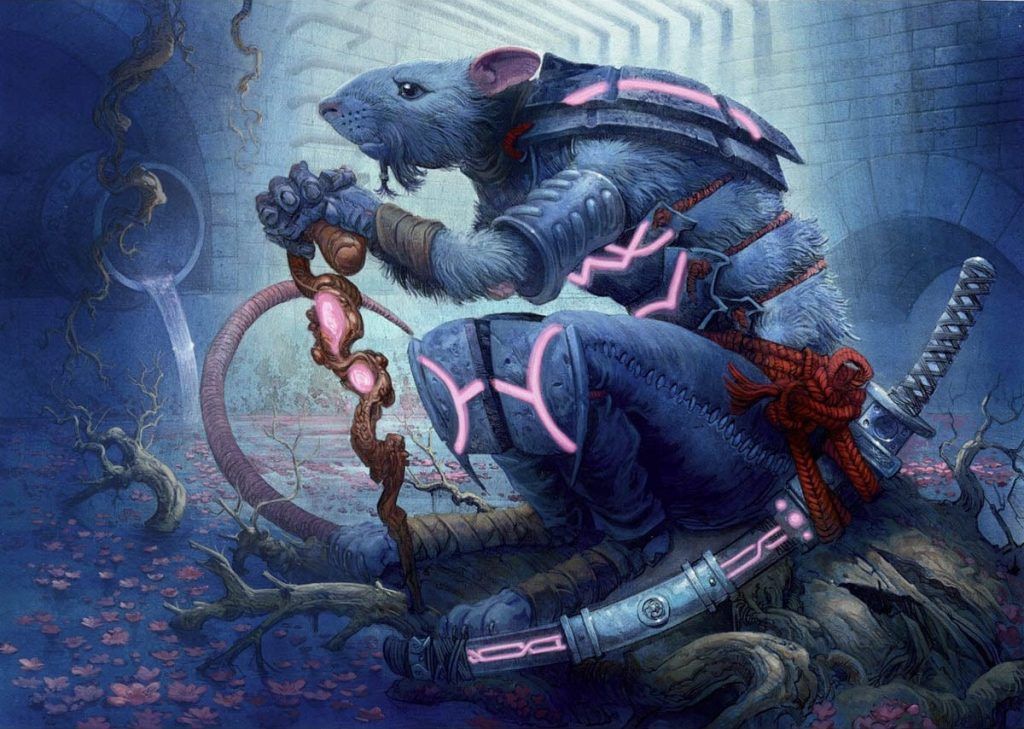
Silver-Fur Master | Illustration by Carl Critchlow
Commander (1)
Creature (27)
Audacious Thief
Azra Smokeshaper
Canal Courier
Deathcult Rogue
Dream Thief
Frogtosser Banneret
Gravelgill Duo
Gray Harbor Merfolk
Jhessian Thief
Kami of Restless Shadows
Keymaster Rogue
Library Larcenist
Littjara Kinseekers
Mistblade Shinobi
Moon-Circuit Hacker
Moonblade Shinobi
Moonsnare Specialist
Mukotai Ambusher
Ninja of the Deep Hours
Ninja of the New Moon
Phantom Ninja
Scroll Thief
Skullsnatcher
Slither Blade
Soulknife Spy
Stealer of Secrets
Triton Shorestalker
Instant (11)
Cancel
Counterspell
Dash Hopes
Disdainful Stroke
Mana Leak
Pack's Disdain
Quench
Raise the Draugr
Spell Rupture
Tragic Fall
Tragic Slip
Sorcery (8)
Aphetto Dredging
Distant Melody
Hands of Binding
Hidden Strings
Kaito's Pursuit
Last Thoughts
Midnight Recovery
Return from Extinction
Enchantment (4)
Aqueous Form
Necromancer's Magemark
Necromantic Thirst
Smoke Shroud
Artifact (15)
Armory of Iroas
Explorer's Scope
Goggles of Night
Goldvein Pick
Jousting Lance
Leather Armor
Mantle of Tides
Neurok Stealthsuit
Prying Blade
Short Sword
Slagwurm Armor
Thieves' Tools
Vanguard's Shield
Vulshok Morningstar
Whispersilk Cloak
Land (14)
Command Tower
Contaminated Aquifer
Dimir Aqueduct
Dimir Guildgate
Forge of Heroes
Ice Tunnel
Island x2
Mystic Sanctuary
Opal Palace
Path of Ancestry
Study Hall
Swamp
Witch's Cottage
Ninjas was a semi-successful Pauper deck for a moment, so it’s no surprise they can translate over to PDH fairly well. Silver-Fur Master is both a cost-reducer and anthem effect for ninjas, making for deadly surprises when you swap out an unblocked Tormented Soul for a Ninja of the New Moon. Of course, ninjas have always had access to some of the best hand disruption at common with Okiba-Gang Shinobi and the best repeatable card draw with Ninja of the Deep Hours. Continue to ninjutsu in your valuable ninjas and return them to your hand with Unsummon effects to keep them safe during your opponents’ turns.
#6. Vizkopa Guildmage

Vizkopa Guildmage | Illustration by Tyler Jacobson
Commander (1)
Creature (26)
Auramancer
Basilica Screecher
Capashen Unicorn
Children of Korlis
Crypt Rats
Dimir House Guard
Disciple of Tevesh Szat
Gangrenous Zombies
Gray Merchant of Asphodel
Griffin Dreamfinder
Gutless Ghoul
Heliod's Pilgrim
Ironclad Slayer
Kami of False Hope
Kor Cartographer
Kor Sanctifiers
Monk Idealist
Moriok Replica
Pilgrim's Eye
Soltari Visionary
Syndic of Tithes
Tithe Drinker
Tragic Poet
Twisted Abomination
Undertaker
Vulturous Aven
Instant (14)
Awe Strike
Congregate
Crypt Incursion
Death Denied
Doom Blade
Grim Harvest
Mana Tithe
Prismatic Strands
Revitalize
Shred Memory
Swift Response
Tendrils of Corruption
Unmake
War Report
Sorcery (10)
Bitter Revelation
Brainspoil
Corrupt
Disturbed Burial
Grim Discovery
Read the Bones
Sign in Blood
Solemn Offering
Syphon Mind
Terashi's Grasp
Enchantment (15)
Casting of Bones
Choking Restraints
Endless Scream
Font of Return
Font of Vigor
Lingering Death
Pestilence
Quag Sickness
Seal of Cleansing
Seal of Doom
Shade's Form
Soul Channeling
Spinal Graft
Tortured Existence
Weight of Conscience
Artifact (7)
Armillary Sphere
Commander's Sphere
Implement of Improvement
Pristine Talisman
Seer's Lantern
Sisay's Ring
Ur-Golem's Eye
Land (39)
Ash Barrens
Bant Panorama
Bojuka Bog
Command Tower
Esper Panorama
Evolving Wilds
Grixis Panorama
Jund Panorama
Mortuary Mire
Orzhov Basilica
Plains x13
Scoured Barrens
Snow-Covered Swamp x14
Terramorphic Expanse
Vizkopa Guildmage is a classic lifegain PDH commander that’s seen play since the format’s inception. Acting as a Sanguine Bond on a body, Vizkopa Guildmage decks work similarly to most lifegain decks: It gains a lot of life while draining its opponents’.
There are no shortages of easy lifegain in Pauper – any format where Gray Merchant of Asphodel is running around makes sure of that. The best Vizkopa Guildmage decks make use of the extort cards at common (Syndic of Tithes, Tithe Drinker) while cards like Riot Control and Children of Korlis can become huge Fireballs with your commander’s second activated ability.
#5. Soulherder
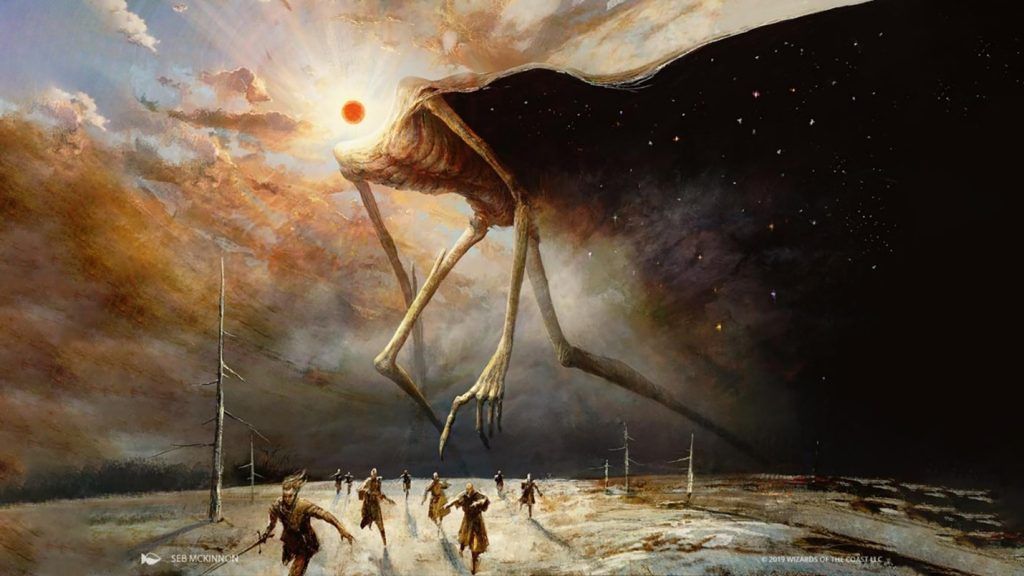
Soulherder | Illustration by Seb McKinnon
Commander (1)
Creature (29)
Aether Adept
Archaeomancer
Aspiring Aeronaut
Auramancer
Aven Riftwatcher
Deadeye Rig-Hauler
Enlightened Maniac
Faerie Seer
Gallant Cavalry
Heliod's Pilgrim
Iron Bully
Ironclad Slayer
Kor Cartographer
Lone Missionary
Merchant of Secrets
Mnemonic Wall
Mulldrifter
Peregrine Drake
Pilgrim's Eye
Sea Gate Oracle
Sensor Splicer
Skyscanner
Stonehorn Dignitary
Sunscape Familiar
Suture Priest
Totem-Guide Hartebeest
Ulamog's Crusher
Village Bell-Ringer
Whirlpool Rider
Instant (17)
Arcane Denial
Brainstorm
Cloudshift
Counterspell
Deprive
Displace
Ephemerate
Foil
Ghostly Flicker
Impulse
Into the Roil
Momentary Blink
Negate
Shadow Rift
Siren's Ruse
Snap
Teferi's Time Twist
Sorcery (4)
Ponder
Preordain
Settle Beyond Reality
Slip Through Space
Enchantment (13)
Alexi's Cloak
Aqueous Form
Arrest
Diplomatic Immunity
Empyrial Armor
Faith's Fetters
Hyena Umbra
Kirtar's Desire
Pentarch Ward
Protective Bubble
Sigil of Sleep
Steel of the Godhead
Traveler's Cloak
Artifact (4)
Azorius Signet
Fellwar Stone
Prismatic Lens
Whispersilk Cloak
Land (32)
Azorius Chancery
Azorius Guildgate
Command Tower
Evolving Wilds
Island x13
Lonely Sandbar
Plains x11
Secluded Steppe
Terramorphic Expanse
Tranquil Cove
I once generated infinite mana in my Yarok, the Desecrated deck and cast Villainous Wealth for X=1000, after which a friend of mine said: “Wow, it’s almost like manipulating enters-the-battlefield effects is really good.” This was the understatement of the century, and they’ve since received many awards and accolades for their insight.
Soulherder is the same card within this format, as far as I’m concerned. Free ETB effects immediately doubles the value you get from any common creature with an ETB, meaning your Lone Missionary gets you 8 life for 2 mana, Skyscanner draws you two cards, Kor Cartographer ramps you better than a Wood Elves, and Stonehorn Dignitary locks your opponents out of twice as many combat steps.
A free Conjurer's Closet each end step is good, but Soulherder just gets better when you include the suite of Cloudshift-ing commons like Ephemerate, Settle Beyond Reality, Teferi's Time Twist, and Ghostly Flicker. Top any Soulherder deck off with a typical common control package (being sure to favor exile-based removal like Journey to Nowhere and Gaze of Justice.
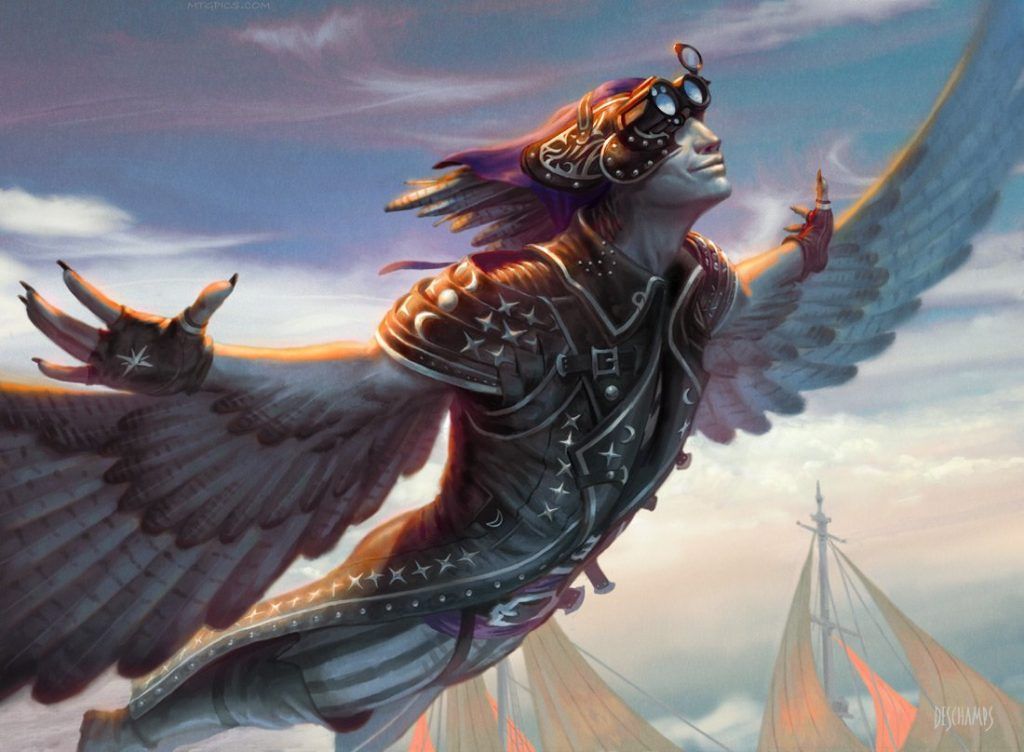
Malcolm, Keen-Eyed Navigator | Illustration by Eric Deschamps
Commander (2)
Breeches, Brazen Plunderer
Malcolm, Keen-Eyed Navigator
Creature (13)
Amoeboid Changeling
Blisterspit Gremlin
Erebor Flamesmith
Firebrand Archer
Guttersnipe
Imagecrafter
Ingenious Artillerist
Kessig Flamebreather
Penregon Strongbull
Reckless Fireweaver
Tandem Lookout
Thermo-Alchemist
Trinket Mage
Instant (31)
Arcane Denial
Behold the Multiverse
Blades of Velis Vel
Blink of an Eye
Boomerang
Breath Weapon
Capsize
Counterspell
Deprive
Dispel
Dispersal Shield
Echoing Truth
Fiery Cannonade
Harvest Pyre
Heated Debate
Impulse
Into the Roil
Lightning Bolt
Memory Lapse
Mizzium Skin
Muddle the Mixture
Negate
Peek
Pyroblast
Red Elemental Blast
Shore Up
Skred
Spell Pierce
Thunderclap
Trickery Charm
Wings of Velis Vel
Sorcery (8)
Deep Analysis
Gitaxian Probe
Lórien Revealed
Merchant Scroll
Ponder
Preordain
Step Through
Treasure Cruise
Enchantment (4)
Ophidian Eye
Seal of Removal
Sigil of Sleep
Stasis Field
Artifact (8)
Aether Spellbomb
Arcane Signet
Bonder's Ornament
Honored Heirloom
Izzet Signet
Network Terminal
Relic of Progenitus
Runed Stalactite
Land (34)
Command Tower
Great Furnace
Mystic Sanctuary
Path of Ancestry
Seat of the Synod
Silverbluff Bridge
Snow-Covered Island x17
Snow-Covered Mountain x10
Volatile Fjord
Yar-har! Malcolm, Keen-Eyed Navigator and Breeches, Brazen Plunderer combine to make one nasty pirate-themed PDH. While The Lost Caverns of Ixalan released a slew of common pirates you can use to fill out an exclusively pirate deck, the best Malcolm/Breeches decks use type-changing cards to combo out.
Notice that neither of these commanders specifies the damage must be from combat – use this to skip the dangerous combat step and instead ping your opponents directly with either a pirate enchanted with Hermetic Study or by changing something like Guttersnipe to a pirate with Blades of Velis Vel. Reckless Fireweaver combos with Malcolm, Keen-Eyed Navigator for infinite damage and Treasure tokens, and with Breeches on the field you can dig through your opponents’ libraries for their game-enders.
#3. Ley Weaver + Lore Weaver

Ley Weaver – Illustration by Livia Prima
Commander (2)
Creature (21)
Arbor Elf
Daggerback Basilisk
Deadly Recluse
Drift of Phantasms
Galvanic Alchemist
Horseshoe Crab
Kessig Recluse
Krosan Restorer
Nightshade Peddler
Prodigal Sorcerer
Rootwater Hunter
Rot Wolf
Seeker of Skybreak
Simic Ragworm
Soliton
Tandem Lookout
Thornwind Faeries
Trinket Mage
Vigean Graftmage
Voyaging Satyr
Zuran Spellcaster
Instant (11)
Banishing Knack
Brainstorm
Capsize
Frantic Search
Mana Leak
Mizzium Skin
Muddle the Mixture
Reclaim
Return to Nature
Run Away Together
Vitalize
Sorcery (12)
Callous Dismissal
Compulsive Research
Counsel of the Soratami
Cultivate
Deep Analysis
Divination
Kodama's Reach
Mobilize
Rampant Growth
Rofellos's Gift
Salvage
Secrets of the Golden City
Enchantment (17)
Dawn's Reflection
Deep Freeze
Fertile Ground
Freed from the Real
Gift of Paradise
Hermetic Study
Kasmina's Transmutation
Lignify
Market Festival
New Horizons
Overgrowth
Psionic Gift
Sheltered Aerie
Snake Umbra
Utopia Sprawl
Verdant Haven
Wild Growth
Artifacts (1)
Land (36)
Ash Barrens
Bant Panorama
Command Tower
Evolving Wilds
Forest x14
Island x13
Seat of the Synod
Simic Growth Chamber
Simic Guildgate
Thornwood Falls
Woodland Stream
The partners Ley Weaver and Lore Weaver are about as straightforward as Simic decks get: They create a bunch of mana and draw a bunch of cards. Freed from the Real loves this deck, instantly going infinite with Ley Weaver to draw as many cards as you need with Lore Weaver. Once you’ve achieved infinite mana, start dumping it into direct damage effects supplemented by an untapper. Using a Viridian Longbow on a Horseshoe Crab is suddenly a devastating combo when mana’s no concern. Really, the only reason this one-two punch of a partner commander combo doesn’t top the list is the steep cost of playing and then sticking two 4-mana commanders.
#2. Gretchen Titchwillow

Gretchen Titchwillow | Illustration by Mila Pesic
Commander (1)
Creature (18)
Arbor Elf
Archaeomancer
Blossom Dryad
Boreal Druid
Cloud of Faeries
Drift of Phantasms
Elvish Mystic
Fyndhorn Elves
Galvanic Alchemist
Juniper Order Druid
Krosan Restorer
Ley Druid
Llanowar Elves
Mnemonic Wall
Sakura-Tribe Scout
Salvager of Secrets
Stone-Seeder Hierophant
Voyaging Satyr
Instant (18)
Arcane Denial
Blink of an Eye
Brainstorm
Counterspell
Crop Rotation
Dispel
Foil
Ghostly Flicker
High Tide
Into the Roil
Mana Leak
Memory Lapse
Muddle the Mixture
Nature's Claim
Negate
Reclaim
Tidal Bore
Winds of Rebuke
Sorcery (5)
Clear the Mind
Gitaxian Probe
Merchant Scroll
Ponder
Preordain
Enchantment (18)
Abundant Growth
Dawn's Reflection
Fertile Ground
Freed from the Real
Frogify
Gift of Paradise
Glittering Frost
Lignify
Market Festival
New Horizons
Overgrowth
Sheltered Aerie
Urban Burgeoning
Urban Utopia
Utopia Sprawl
Verdant Haven
Wild Growth
Wind Zendikon
Artifact (2)
Expedition Map
Lifespark Spellbomb
Land (37)
Command Tower
Evolving Wilds
Forest x16
Halimar Depths
Island x15
Mystic Sanctuary
Simic Growth Chamber
Terramorphic Expanse
There’s a lot of debate over which is better between Gretchen Titchwillow or Tatyova, Benthic Druid. Gretchen’s got Tatyova beat on mana cost and toughness, but its ability runs you 4 mana for each activation. While each commander typically exists to enable or otherwise set up a combo, Gretchen just won’t see as many cards as Tatyova until you’ve already set up the infinite mana combo. Really, the difference between these two comes down to how you like to play your deck, and what the meta around you looks like. If you find yourself staring down a quick Rograkh, Son of Rohgahh deck every week, Gretchen Titchwillow’s two mana value and 4 toughness are probably the better choice.
#1. Tatyova, Benthic Druid
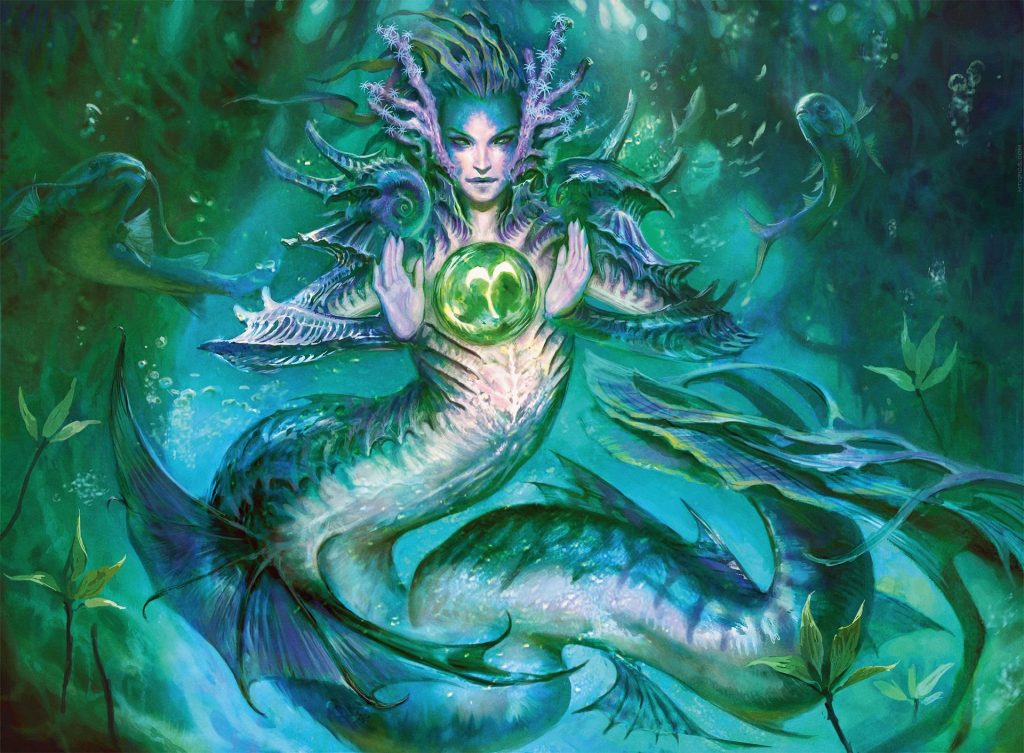
Tatyova, Benthic Druid | Illustration by Mathias Kollros
Commander (1)
Creature (12)
Archaeomancer
Drift of Phantasms
Llanowar Scout
Mnemonic Wall
Peregrine Drake
Sakura-Tribe Scout
Scaled Herbalist
Shipwreck Dowser
Shoreline Ranger
Skyshroud Ranger
Tidal Terror
Walking Atlas
Instant (27)
Arcane Denial
Blink of an Eye
Brainstorm
Capsize
Counterspell
Crop Rotation
Deprive
Dispel
Dizzy Spell
Frantic Search
Ghostly Flicker
Growth Spiral
Gush
Harrow
High Tide
Impulse
Into the Roil
Mana Leak
Memory Lapse
Moment's Peace
Muddle the Mixture
Negate
Peek
Return to Nature
Tidal Bore
Tragic Lesson
Whispers of the Muse
Sorcery (16)
Compulsive Research
Cultivate
Deep Analysis
Explore
Farseek
Gitaxian Probe
Into the North
Kodama's Reach
Lórien Revealed
Merchant Scroll
Nature's Lore
Ponder
Preordain
Rampant Growth
Three Visits
Treasure Cruise
Enchantment (4)
Deep Freeze
Lignify
Tamiyo's Compleation
Witness Protection
Artifact (3)
Arcum's Astrolabe
Expedition Map
Relic of Progenitus
Land (37)
Command Tower
Evolving Wilds
Halimar Depths
Mystic Sanctuary
Rimewood Falls
Simic Growth Chamber
Snow-Covered Forest x12
Snow-Covered Island x18
Terramorphic Expanse
There are more than a few Simic commanders on this list. That should come as no surprise since Simic has always had a leg up on the other color combinations when it comes to Eternal formats. Access to the best ramp and card draw gives green/blue an advantage when it comes to generating straight-up value, and Tatyova, Benthic Druid may be the best of the best. 5 mana makes Tatyova one of the more expensive PDH commanders on this list, but that’s definitely within reach in the overall slower Pauper Commander environment. Once it hits the field, it’s over.
Tatyova, Benthic Druid is one of those commanders that rewards you for playing the game. The lack of an activation cost in its text box means you won’t waste mana refilling your hand, and cards like Seeker of Skybreak and Walking Atlas can get you two or more triggers per turn. This is all in addition to traditional ramp; Rampant Growth, Cultivate, and Explore are all legal in this format, too.
The end game with Tatyova can really look like anything. Chances are, if you can stick it, you’ll have more mana and cards than you know what to do with, and you can easily start dumping that into any ol’ beater you want (Hand of Emrakul and Ulamog's Crusher come to mind), or you can go truly infinite with a Peregrine Drake, Archaeomancer and Ghostly Flicker.
Wrap Up

Ash Barrens | Illustration by Jonas De Ro
I’m a firm believer that uncommons are the best cards in Magic: The Gathering, full stop. Rares and mythics might make for the huge, splashy plays we love, and commons might hold down the fort for all your basic effects, but uncommons are the missing link between the two. Uncommons always have effects that bridge the gap between “unplayable” and “playable,” standing as shining examples of what any given color can do within the bounds of that set’s design.
Each new set brings plenty more uncommon creatures, so expect this list to shift significantly in the coming years as more players latch onto (the superior) Pauper Commander format in search of a small-ball Magic format that won’t break the bank.
Which of these Commanders is your favorite for PDH? Are there any glaringly obvious choices I neglected? And why are so many of them Izzet or Simic aligned? Let me know in the comments, or over on Draftsim’s TwXtter. Thanks for reading, and keep it simple!
Follow Draftsim for awesome articles and set updates:
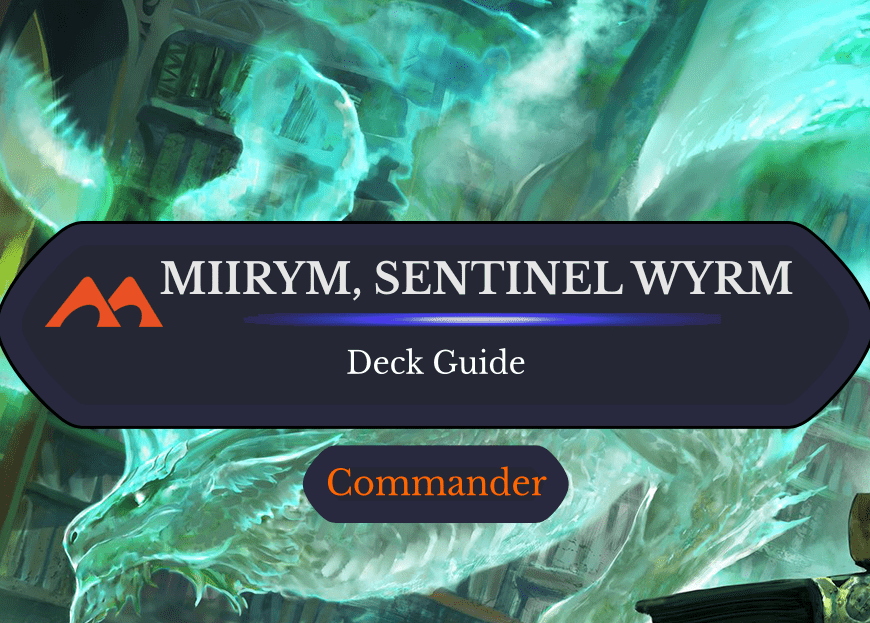
Add Comment